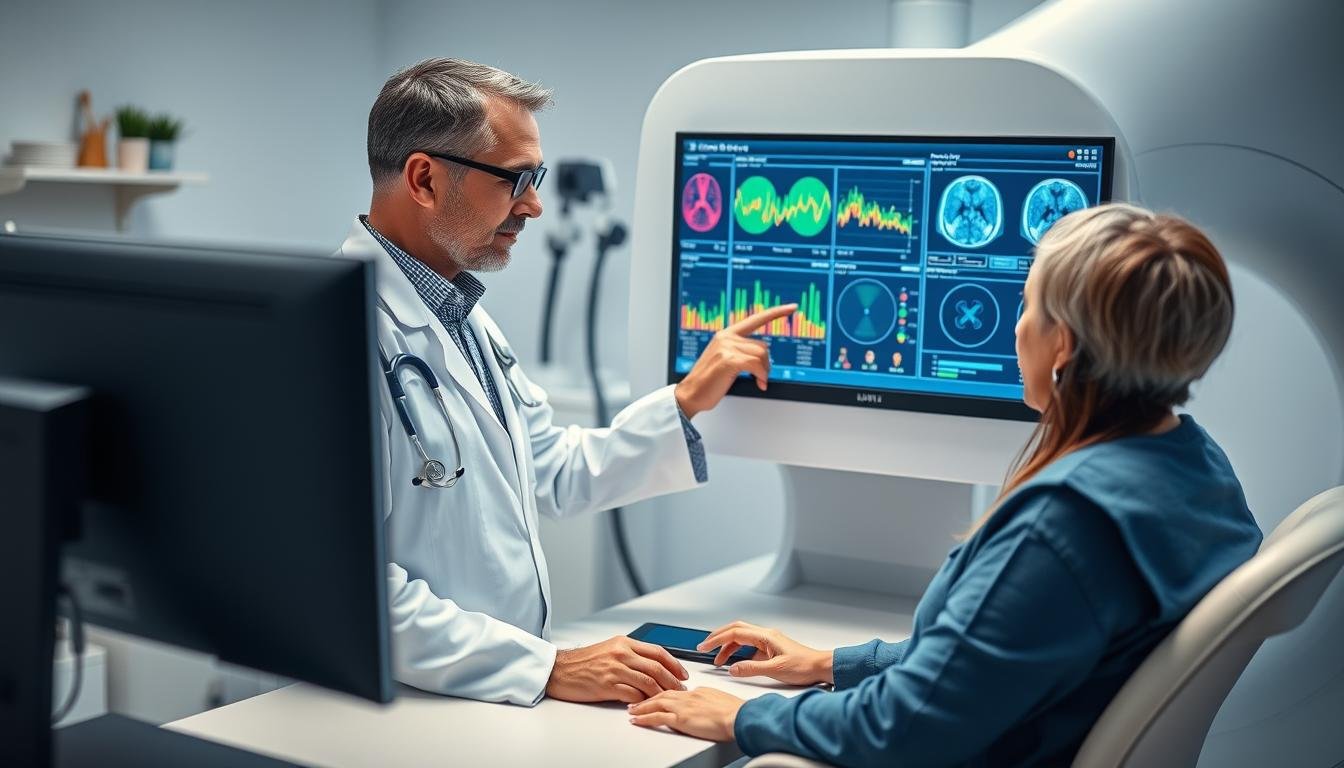How Does a Quantum Resonance Magnetic Analyzer Work?In today’s health-conscious world, advanced technologies are revolutionizing how we monitor our wellbeing. The Quantum Resonance Magnetic Analyzer represents one such innovation, offering insights into the body’s condition through principles of quantum physics and magnetic resonance. This comprehensive guide explores the inner workings of this fascinating technology, from its basic principles to practical applications.
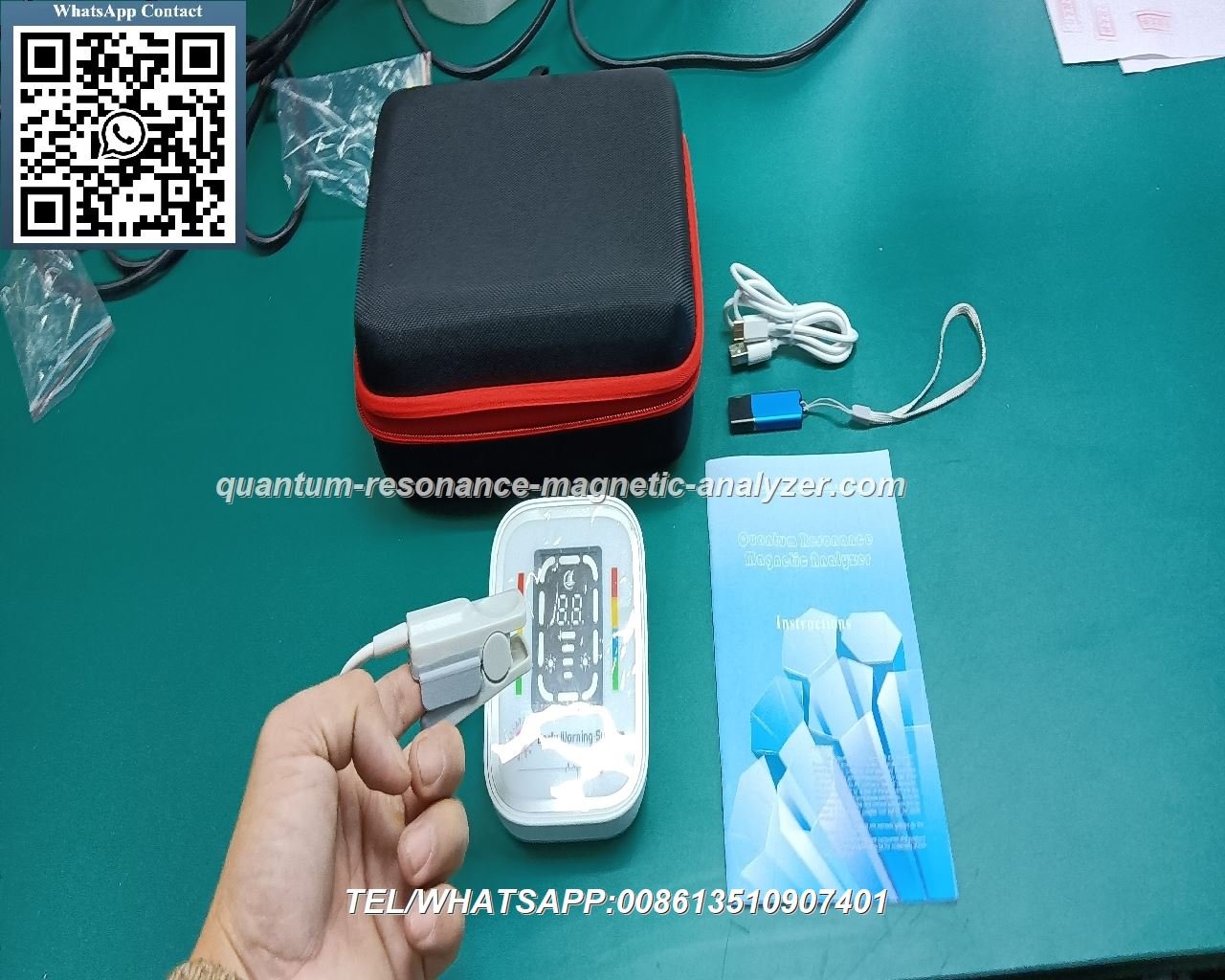
Understanding the Basic Principles of Quantum Resonance
Modern quantum resonance magnetic analyzer with hand sensor and analysis software
How Does a Quantum Resonance Magnetic Analyzer Work?At its core, the quantum resonance magnetic analyzer operates on the principle that all matter, including human cells, emits specific electromagnetic frequencies. When cells undergo changes due to disease or nutritional imbalances, these frequencies change accordingly. The analyzer detects these subtle electromagnetic signals and interprets them to provide insights into the body’s condition.
The theoretical foundation stems from quantum physics, which recognizes that atoms and molecules exist in various energy states. When cells function normally, they maintain specific vibrational frequencies. Any deviation from these normal frequencies can indicate potential health issues or imbalances at the cellular level.
The Science of Electromagnetic Wave Resonance
The quantum resonance magnetic analyzer works similarly to how a radio tunes into specific frequencies. Just as a radio can isolate one station’s signal from countless others in the air, the analyzer detects specific frequency patterns emitted by the body’s cells.
Imagine the device as a sophisticated tuning fork for your body’s energy. When the analyzer’s frequency matches that of specific cells or systems in your body, resonance occurs, allowing for measurement and analysis.
This resonance phenomenon enables the device to collect data without invasive procedures. The analyzer amplifies these weak magnetic signals, processes them through specialized software, and compares them against standardized health parameters to generate comprehensive reports.
Key Components of a Quantum Resonance Magnetic Analyzer
The quantum resonance magnetic analyzer consists of several essential components that work together to collect, process, and interpret bioelectrical signals from the body:
Hardware Components
- Biofeedback Sensors: Usually hand-held or placed on specific points of the body, these sensors detect the weak magnetic fields generated by cells.
- Signal Amplifier: Enhances the weak electromagnetic signals to measurable levels.
- Processing Unit: Converts analog signals to digital data for analysis.
- Computer Interface: Connects the device to a computer for data processing and display.
Software Components
- Analysis Software: Processes the collected data and compares it with reference values.
- Database: Contains standardized health parameters for comparison.
- Reporting System: Generates comprehensive health reports with visualizations.
- User Interface: Allows operators to control the device and interpret results.
How Does a Quantum Resonance Magnetic Analyzer Work?The integration of these components creates a system capable of non-invasive health assessment. The hardware collects the raw biological signals, while the software interprets these signals into meaningful health information through complex algorithms and comparison with established reference values.
The Step-by-Step Process of Data Collection and Analysis
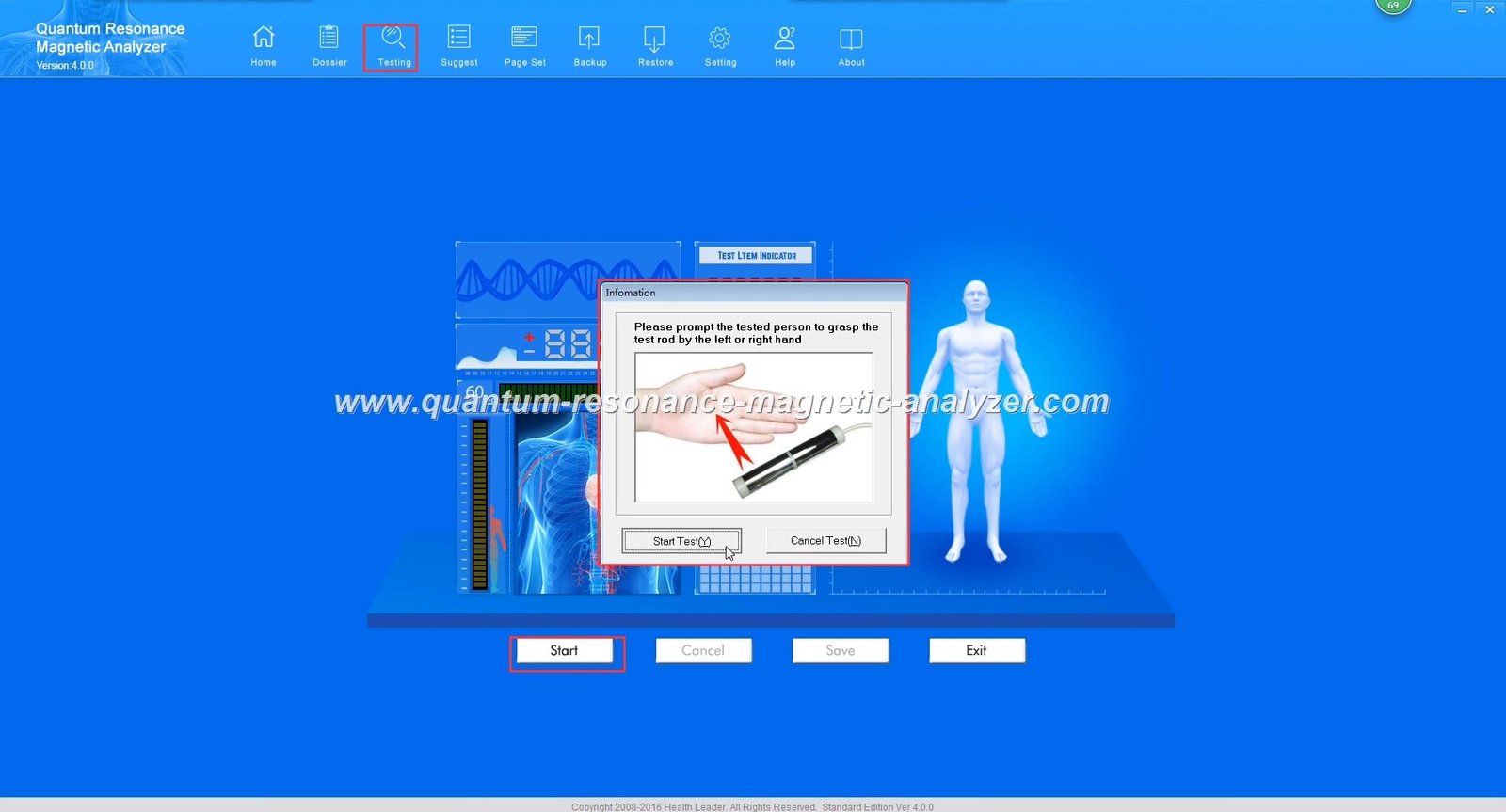
Testing process with the quantum resonance magnetic analyzer in a clinical setting
Understanding how the quantum resonance magnetic analyzer works requires examining the step-by-step process from initial data collection to final report generation:
- Preparation: The subject relaxes in a comfortable position, as stress and movement can affect readings. The environment should be quiet with minimal electromagnetic interference.
- Sensor Connection: The subject holds the sensor (typically in their palm) or has sensors placed at specific points on the body. These sensors act as the interface between the body’s electromagnetic field and the analyzer.
- Signal Detection: The device detects the weak magnetic fields generated by the body’s cells, focusing on the specific frequency ranges associated with different body systems and functions.
- Signal Amplification: The detected signals, typically in the micro-gauss range, are amplified to levels that can be effectively processed by the system.
- Digital Conversion: Analog signals are converted to digital data that can be analyzed by the computer software.
- Comparative Analysis: The software compares the collected data against a database of standard quantum resonance spectra for various health parameters.
- Report Generation: Based on the analysis, the system generates a comprehensive report highlighting potential imbalances, deficiencies, or areas of concern.

Sample analysis report showing multiple health parameters and indicators
The entire process typically takes only a few minutes, making it significantly faster than traditional diagnostic methods that might require laboratory analysis or specialized imaging. This efficiency, combined with the non-invasive nature of the test, contributes to its growing popularity in various health assessment settings.
Real-World Applications and Health Assessment Capabilities
The quantum resonance magnetic analyzer offers a wide range of applications in health assessment and monitoring. Its ability to provide comprehensive insights into various body systems makes it valuable in multiple contexts:
Health Parameters Assessed
Nutritional Status
- Vitamin levels and deficiencies
- Mineral balance and electrolytes
- Amino acid profiles
- Antioxidant status
Organ Function
- Cardiovascular health
- Liver and kidney function
- Digestive system assessment
- Endocrine system balance
Metabolic Indicators
- Blood sugar regulation
- Lipid metabolism
- Protein metabolism
- Energy production efficiency
Practical Applications

Quantum resonance magnetic analyzer integrated into a modern wellness clinic
Preventive Health Screening
The analyzer excels in early detection of potential health issues before they manifest as clinical symptoms. By identifying subtle imbalances at the cellular level, it enables proactive health management and preventive interventions.
Complementary Assessment
While not replacing conventional diagnostics, the analyzer provides complementary information that can guide further testing. Healthcare practitioners often use it alongside traditional methods for a more comprehensive health picture.
Wellness Monitoring
For individuals focused on optimizing their health, the analyzer offers regular monitoring of nutritional status, stress levels, and overall wellbeing. This allows for timely adjustments to lifestyle, diet, and supplementation.
Treatment Progress Evaluation
The device can track changes in health parameters over time, making it useful for monitoring response to interventions, whether conventional treatments or alternative therapies.
Scientific Basis and Theoretical Framework
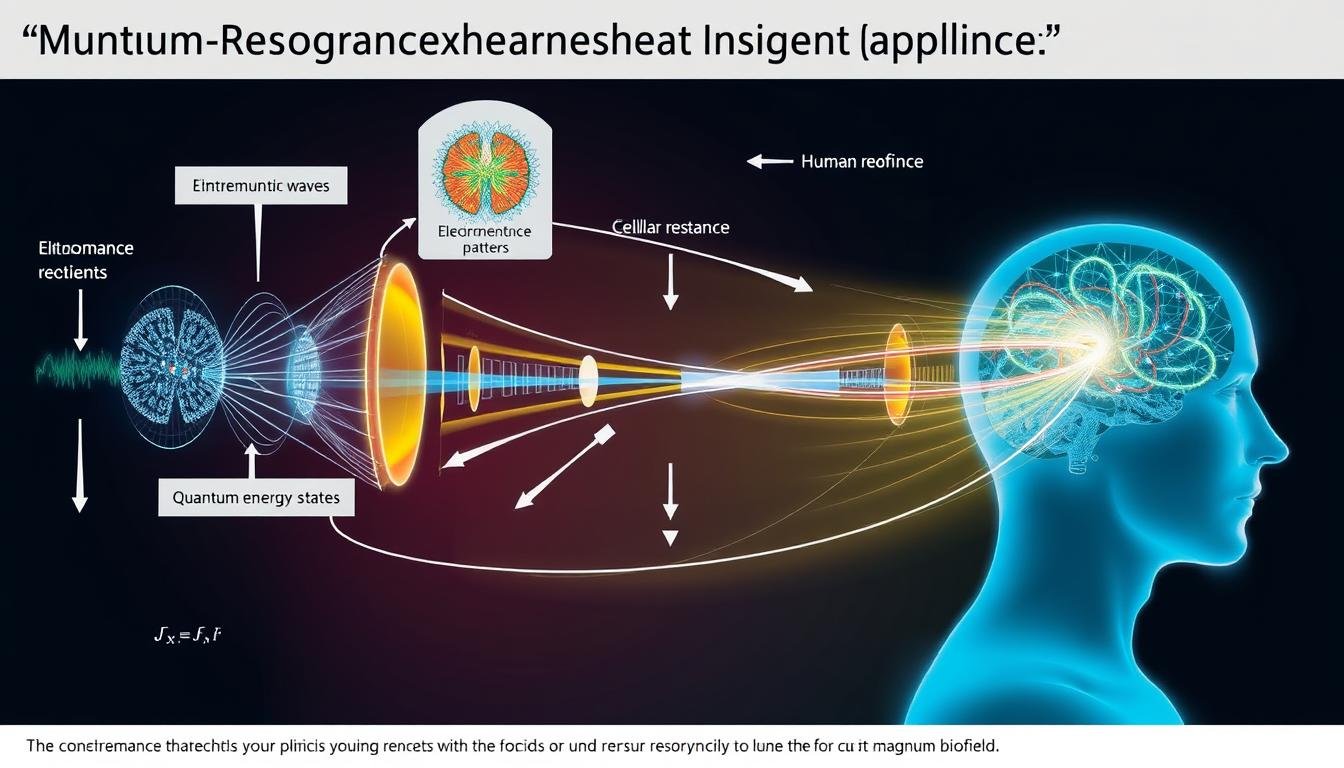
Scientific principles underlying quantum resonance magnetic analysis technology
The quantum resonance magnetic analyzer operates at the intersection of several scientific disciplines, including quantum physics, biophysics, and information theory. Understanding its theoretical framework helps clarify both its capabilities and limitations.
Electromagnetic Theory and Biofeedback
The analyzer’s function is grounded in the established science of electromagnetic fields. All living cells generate weak electromagnetic fields as a result of biochemical processes. These fields contain information about cellular activity and can be measured with sensitive equipment.
The principle of biofeedback—the process of gaining awareness of physiological functions—plays a key role. The analyzer essentially provides biofeedback at the electromagnetic level, detecting subtle energy patterns that reflect physiological states.
Quantum Resonance Principles
When a person is ill, the most fundamental reason is that the atoms’ extra-nuclear spin and orbital changes cause subsequent alterations in atomic structure, biological molecules, and ultimately cellular function. These changes emit characteristic electromagnetic waves that can be detected and analyzed.
The quantum aspect refers to the device’s ability to detect energy at the quantum level—the smallest discrete amount of physical property. By analyzing these quantum-level energy patterns, the device aims to identify deviations from normal health parameters.

Sensor technology detecting subtle electromagnetic signals from the body
While the theoretical framework is sound, it’s important to note that the scientific community continues to research and validate the specific applications and accuracy of quantum resonance analysis in various health contexts. The technology represents an evolving field at the frontier of biophysics and health assessment.
How Does a Quantum Resonance Magnetic Analyzer Work Video?
Frequently Asked Questions About Quantum Resonance Magnetic Analyzers
How accurate is the quantum resonance magnetic analyzer?
The accuracy of quantum resonance magnetic analyzers varies based on several factors, including the quality of the device, the expertise of the operator, and the specific parameters being measured. Experienced practitioners report accuracy rates of approximately 85-90% when compared with traditional diagnostic methods.
However, it’s important to understand that the analyzer is primarily a screening tool rather than a definitive diagnostic device. Its results should be interpreted as indicators that may warrant further investigation through conventional medical testing.
Is the testing process safe and non-invasive?
Yes, the quantum resonance magnetic analyzer testing process is completely non-invasive and safe. The device only detects the body’s natural electromagnetic signals without emitting significant energy into the body. There are no needles, radiation, or physical discomfort involved.
The process simply requires holding a sensor or having sensors placed on the skin. This makes it suitable for people of all ages, including those who might be apprehensive about more invasive testing procedures.
Can the quantum resonance magnetic analyzer replace conventional medical tests?
No, the quantum resonance magnetic analyzer should not replace conventional medical diagnostics. Instead, it serves as a complementary tool that can provide additional insights and guide further investigation.
The device is most valuable when used as part of a comprehensive approach to health assessment, working alongside traditional methods like blood tests, imaging studies, and clinical examinations. Its strength lies in providing a broad overview of multiple health parameters simultaneously and potentially identifying subtle imbalances before they manifest as clinical symptoms.
How long does a complete analysis take?
A complete analysis with a quantum resonance magnetic analyzer typically takes between 1-3 minutes for data collection. The generation and interpretation of the comprehensive report may take an additional 10-15 minutes, depending on the depth of analysis and the practitioner’s explanation.
This efficiency is one of the key advantages of the technology, allowing for rapid health assessments without the waiting periods associated with laboratory tests or specialized imaging procedures.
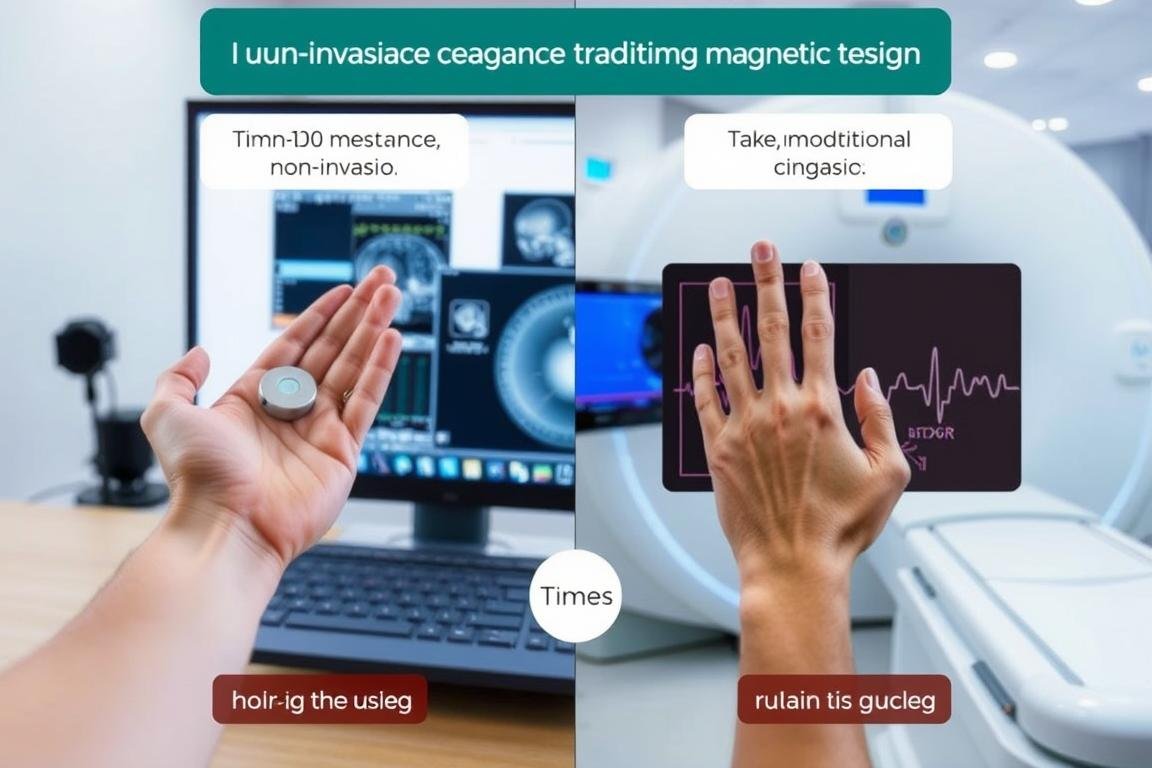
Comparing quantum resonance analysis with traditional diagnostic approaches
Understanding the Limitations and Considerations
Advantages
- Non-invasive and painless testing procedure
- Comprehensive assessment of multiple health parameters
- Rapid results without laboratory waiting times
- Early detection of potential health imbalances
- No side effects or recovery period needed
- Cost-effective compared to multiple specialized tests
Limitations
- Not a replacement for conventional medical diagnostics
- Varying accuracy depending on device quality and operator expertise
- Limited scientific validation for some specific health parameters
- Results can be affected by environmental electromagnetic interference
- Interpretation requires skilled practitioners for meaningful insights
- Not universally accepted in all medical communities
When considering quantum resonance magnetic analysis, it’s essential to maintain a balanced perspective. The technology offers valuable insights as part of a holistic approach to health assessment but should be viewed as complementary to established medical practices rather than a replacement.

Professional consultation discussing both benefits and limitations of quantum analysis
For optimal results, the analyzer should be used by trained professionals who understand both its capabilities and limitations. The technology continues to evolve, with ongoing research and development aimed at enhancing its accuracy and expanding its applications in health assessment.
Conclusion: The Future of Quantum Resonance Magnetic Analysis
The quantum resonance magnetic analyzer represents an innovative approach to health assessment that bridges traditional medicine and advanced biophysics. By detecting and analyzing the body’s electromagnetic signals, it offers insights into cellular function and overall health status without invasive procedures.
As with any emerging technology, its applications continue to evolve. Ongoing research and development are likely to enhance its accuracy, expand its capabilities, and further validate its role in health assessment. The integration of artificial intelligence and machine learning algorithms promises to improve data interpretation and personalized health recommendations.
For individuals seeking comprehensive health insights, the quantum resonance magnetic analyzer offers a valuable complementary tool when used alongside conventional medical approaches. Its non-invasive nature, efficiency, and ability to detect subtle imbalances make it particularly useful for preventive health strategies and holistic wellness monitoring.

The evolving future of quantum resonance magnetic analysis technology
Experience Advanced Health Assessment Technology
Discover how quantum resonance magnetic analysis can provide comprehensive insights into your health status. Our professional team offers consultations to explain the technology and its benefits for your specific health goals.
Schedule a Demonstration
Or contact our specialists directly:





